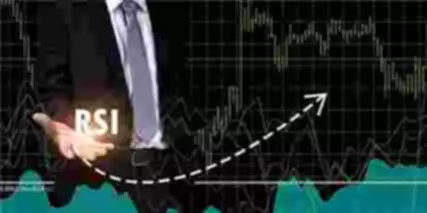June 11, 2021 |
James Messi
Trading can be a complicated endeavor, particularly when just starting out. One thing you can do to flatten the learning curve entails studying up on indicators that are used the most by professional traders to get a better understanding of where the market is at a given time and where it may be headed.
In this article, we’ll dive into one of, if not the most popular indicator in the universe of speculative trading and investing. The indicator is referred to as the Relative Strength Index or RSI. The indicator was developed by J. Wells Wilder in 1978 so that he could calculate time-weighted buying and selling pressure with greater accuracy.
On a chart, the RSI is a simple line graph that is tracked within a range between 0 and 100. A low RSI, or one closer to zero, captures a market that is oversold and has sustained a mathematically unreasonable amount of selling. On the other hand, an asset with a high RSI, or one closer to 100, is considered to have attained a mathematically unreasonable amount of buying.
The RSI is used at varying decision points in a trade. It can be used to determine where your order should be opened or closed. As well as to gauge whether or not your current orders should be adjusted. For the most part, RSI is deployed to better understand where a trend is, or where it may pause and reverse.
What is RSI?

A type of momentum oscillator, the RSI’s job is to measure the magnitude of how current prices change when it moves between 0 and 100. Simply put, this oscillator spots when an asset is overbought and oversold on any given timeframe.
Overbought describes an asset that goes beyond its innate value regardless of duration. What this tells traders is that this might be an initial sign that the value is susceptible to being corrected.
Oversold on the other hand strongly suggests that selling pressure was too intense moving below the asset’s normalized value. Assets with an oversold RSI are more likely to bounce higher than one that is overbought.
When the RSI is between 50 and 100, it is considered bullish momentum. Conversely, If the RSI falls between 0 and 50, it means that a bearish trend has emerged. A trend can be considered neutral, in regards to RSI, when the indicator is between 40 and 60.
An asset is determined to be in overbought territory when its RSI is above 70 on a given timeframe. Overbought assets have a higher chance of becoming less valuable. On the flip side, an asset with an RSI below 30 is considered to be oversold. Oversold assets have a greater chance of gaining in value.
The formula for calculating RSI can be found below:
RSI = 100 – [100 / ( 1 + (Average of Upward Price Change / Average of Downward Price Change ) ) ]
RSI and MACD: Function and Similarities
The Moving Average Convergence Divergence (MACD) is comparable to the RSI which follows momentum. This gives traders an idea of the relationship between two moving averages that track convergence and divergence. Calculating the MACD requires the subtraction of the 26-period exponential moving average or EMA from the 12-period EMA.
The “signal line” refers to the 9-day EMA of the MACD and is plotted above the MACD line which may serve as a buy and sell signal.
The RSI Indicator: Key Takeaways
To help understand the key takeaways, here are some of the important points to keep in mind:
RSI Indicator or Relative Strength Index Indicator is a momentum oscillator
The RSI Indicator measures the magnitude of how current prices change when it moves between 0 and 100
Overbought describes an asset that goes beyond its innate value regardless of duration. This can provide the initial signal that the value is susceptible to being corrected.
Oversold suggests that selling was done below the asset’s mean value. Oversold RSI may signal for a rebound.
When the RSI diverges from price action, this is “Negative Divergence” or “Bearish Divergence”
The MACD or the Moving Average Convergence Divergence is an additional momentum indicator that can be tracked in tandem with the RSI
Closing Thoughts on the RSI
The use of the RSI Indicator benefits those that are day trading crypto or swing trading cryptocurrency. As you are able to understand the mechanics of more indicators and how to put them to use, your arsenal as a trader grows. Always consider the fact that no indicator is 100% accurate on their own. We recommend using indicators such as the RSI in combination with other price action predictors such as Fibonacci Retracement levels.